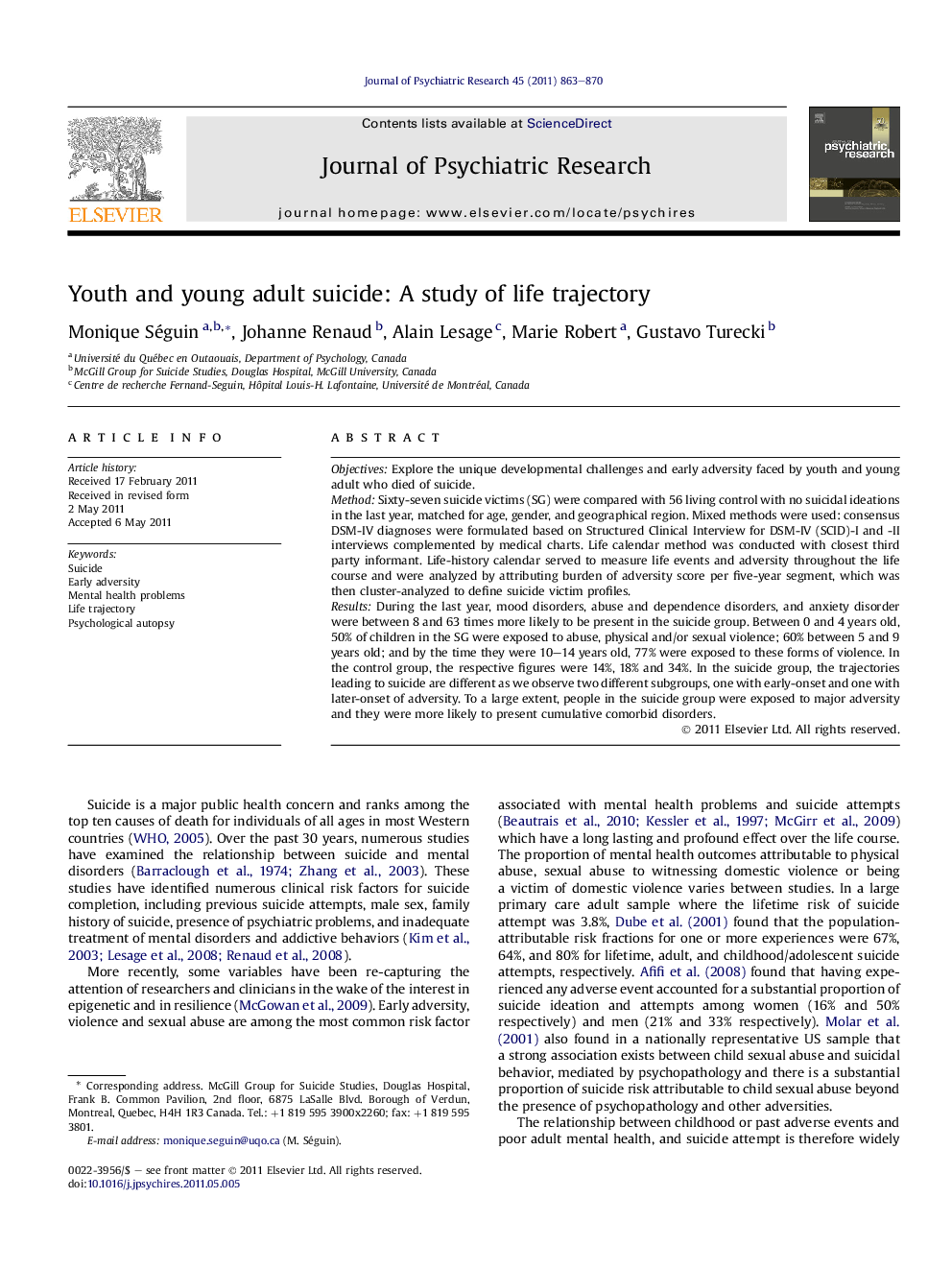| Article ID | Journal | Published Year | Pages | File Type |
|---|---|---|---|---|
| 326565 | Journal of Psychiatric Research | 2011 | 8 Pages |
ObjectivesExplore the unique developmental challenges and early adversity faced by youth and young adult who died of suicide.MethodSixty-seven suicide victims (SG) were compared with 56 living control with no suicidal ideations in the last year, matched for age, gender, and geographical region. Mixed methods were used: consensus DSM-IV diagnoses were formulated based on Structured Clinical Interview for DSM-IV (SCID)-I and -II interviews complemented by medical charts. Life calendar method was conducted with closest third party informant. Life-history calendar served to measure life events and adversity throughout the life course and were analyzed by attributing burden of adversity score per five-year segment, which was then cluster-analyzed to define suicide victim profiles.ResultsDuring the last year, mood disorders, abuse and dependence disorders, and anxiety disorder were between 8 and 63 times more likely to be present in the suicide group. Between 0 and 4 years old, 50% of children in the SG were exposed to abuse, physical and/or sexual violence; 60% between 5 and 9 years old; and by the time they were 10–14 years old, 77% were exposed to these forms of violence. In the control group, the respective figures were 14%, 18% and 34%. In the suicide group, the trajectories leading to suicide are different as we observe two different subgroups, one with early-onset and one with later-onset of adversity. To a large extent, people in the suicide group were exposed to major adversity and they were more likely to present cumulative comorbid disorders.
